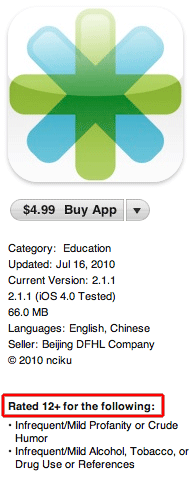 For those following Nokia, this article from The Register is a must read.
For those following Nokia, this article from The Register is a must read.
The corporate culture of Nokia is unique. Like any large company, it has an overwhelming number of processes, political battles, and organizational changes. At time it feels like a monstrous robot trudging along, yet there is a super-computer at its core. A “human cloud” for lack of a better explanation. The analysis that’s done within this cloud, not to mention the innovations conceptually developed there, would astound those that only associate Nokia with cheap, plastic phones. Sadly, this intelligent cloud can’t always get successfully navigates its own robot arms and legs.
So when Juhani Risku, the former Nokia employee profiled in the article, gives his assessment of Nokia’s problems, I couldn’t help but think, “yes…Yes…YES!!!” It’s easy to dismiss him as someone pointing out problems who has no power to solve them, but his message is almost spot on. Risku believes Nokia has become a “a risk-averse bureaucracy” that “stifles innovation” and “makes progress slow or non-existent.” To make it worse, he’s revealed that competitors brought to market ideas that were born in Nokia, but had “realis[ed] them better”. I happen to agree with him on two sources of this problem.
The first is what Risku calls Nokia’s “obsession with data gathering.” Even a few days inside of Nokia will overwhelm anyone with the immensity of research available to the average employee. In some cases, it’s so bad that one could make a compelling argument for either side of an issue by referencing this or that research report. I do believe senior management had sifted through this data and chosen their direction, but from middle-management down, the often contradicting sources of information could easily immobilize a discussion. Not knowing which side to take, many of us stood still waiting for more data, typically waiting until market conditions validated one viewpoint over the other. There was a line out the door of people willing to make a decision, but culturally, the lack of enough market data prevented many from taking the risk. Since the mobile market is constantly in flux, many new markets just wont show up in a research report. As such, Nokia has accepted to be a fast-follower in certain trends and development.
Second, Risku takes aim at Nokia’s segmentation and consumer-driven approach towards device creation. As a marketing professional I have a firm respect and appreciation for market segmentation and consumer-facing decisions, so don’t misunderstand my points here. Up until the last six months of my tenure at Nokia, I drank the segmentation and consumer-focus Kool-Aid just as much as the next person. Nokia’s segmentation strategy offered a common understanding across markets and presented us a vocabulary on how to address them. In that way, it was absolutely fantastic. However, it fails similarly around the “data gathering” issue, that being it could not address markets that were not there. I recognize the obviousness of this statement, but I came to the conclusion that much of our segmentation had created pockets of walled-in thinking. Much of what should have been used to attack markets, became used to attack new ideas and innovation that did not fit within the model. I don’t believe any of the originators of our segmentation had this thinking in mind as it was created, it just developed as such.
Worse, it had the debilitating effect of limiting innovation. To clarify, it did not eliminate it, but may have restricted the scope of many to only think within narrowly defined customer segments and experiences. Many of us attempted to match everything in the phone to the desired segment: design, appearance, pricing, promotion, etc. Contrast this with the current Apple/Google approach that provide a strong platform with a broad ecosystem of innovative 3rd parties. Apple specifically has honed its offering around the user experience, but basically has left each user to define himself by mixing and matching applications. To put it another way, Apple/Google offered everyone a blank sheet of paper with the developer ecosystem providing the crayons. Nokia unfortunately is left writing in the margins of an old over-used piece of paper (Symbian), with nothing to show for it than a black pen and some white-out.
The patriotic side of me may bleed through here, but one issue I did take with Risku is his almost venomous view of the “American business culture” whose “arrogance and aggression” that be believes “paralysed Nokia.” I can agree it would be near impossible for an American outsider to easily walk into Nokia and make changes without destroying value left and right. However, my judgement is not based off the belief that the American way-of-thinking is inherently wrong. It’s more more due to the complexity that Nokia has built around itself that almost requires a sherpa to navigate. Much of this was built on an arrogance of “not invented here” that makes Nokia bulky in places, extremely limiting its agility to respond to changing markets. I wont even get into how European-centric development arrogance has repeatedly cost Nokia the North American market.
Risku misses the point in regard to aggression as well. The first thing I noticed about Nokia, versus my previous employer Intel, was its lack of aggression. My feeling then, and even now to a certain extent, was that Nokia waited for markets to develop while Intel aggressively went out and built them. Sure, Intel has lost a few along the way (WiMax, Network Processors, etc.), but when it wins, it wins big because it builds the market the suit them. Qualcomm, a historical thorn in Nokia’s side, also takes this approach by building markets where Nokia is too bloated to move or too arrogant to think they can be knocked off their block. So while Risku wants to make aggression sound negative, it is also a source for many companies to continually innovate, seek out new markets, and adapt. If you watch Nokia’s attempt at broad ecosystem creation, you’ll quickly see how the lack of directed aggression hinders much of their progress.
So as a former employee, I’d like to say that Nokia is still an extremely powerful competitor in the market. Yes, many newer entrants are getting the press, but none of them yet does as many things as consistently well as Nokia. They all have exploitable weaknesses that Nokia is capable of addressing. If and when Nokia fixes its smartphone problem, you’ll see many customers come back to them. There is a still a strong brand preference out there for them to rebuild upon if done sooner than later. Their reach across markets and relationships with operators and consumers is still there. The giant robot may be slow in its lumbering, but it’s still a giant robot that could still potentially smash its giant hands down.
And finally, the people inside Nokia are still some of the brightest and most talented in the industry, if not the world. Many of them are quiet leaders in their respective fields, and most of them have an intense desire to see Nokia return to its former glory (and values). Obviously some of them are still my friends, so I’m biased. However, I can assure you that if Nokia can put together a vision of the future for its people to truly rally behind, you’ll see a newly rejuvenated company roaring back across all their markets.
I wish them good luck.


